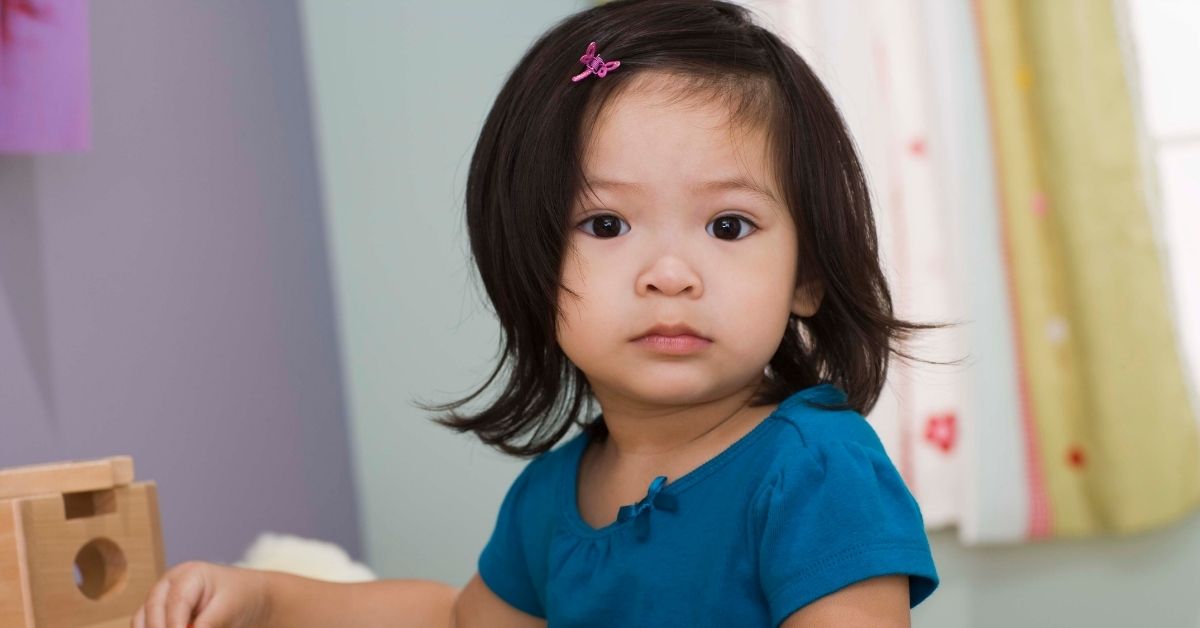
Author: Sonal Bhatia MBBS, MD
Medical University of South Carolina
Reviewed: May 2021
SUMMARY
Febrile seizures are the most common type of seizures in healthy children. They result from a high or rapid rise in fever. The term “febrile” means something is related to a fever or feverish.
Febrile seizures look like convulsions or shaking that usually moves limbs on both sides of the body. They also include a loss of consciousness. Febrile seizures:
- Typically occur within 24 hours of onset or at the “height” of a fever
- Usually occur when a fever is at least 38.4°C (101°F)
- Are usually related to an underlying viral ailment
- Can sometimes be the first sign of a illness
By definition, febrile seizures occur in:
- Children with normal neurological development
- Children without a prior history of non-fever-related seizures
- Children who do not have infections of the central nervous system
On an average, 1 in 25 children will have at least one febrile seizure. This will usually take place between the ages of 6 months and 5 years, with a peak at 18 months. Boys are slightly more at risk than girls for febrile seizures.
These seizures can be a scary experience for parents and family members. However, they typically do not cause any long-term health problems. They are not synonymous with a child having epilepsy. They do not require daily anti-seizure medication.
JUMP TO
Disorder Overview
DESCRIPTION
There are two types of febrile seizures: simple and complex.
Neither of these types increase the risk of dying, injury, brain damage, or learning problems.
Simple Febrile Seizures
Complex Febrile Seizures

CAUSES
A viral infection is often the immediate cause of a febrile seizure. However, there is often a genetic component to a child’s susceptibility to this condition.
In up to half of cases, there is a family history of febrile seizures, mostly in a parent or sibling. Febrile seizures are two to three times more common in the family members of affected children.
Researchers have now identified several genes that can influence the risk of febrile seizures.
LABORATORY INVESTIGATIONS
No additional neurological testing is needed for simple febrile seizures in a neurologically healthy child.
Testing for Cause of Fever
However, some fevers have very serious causes. A thorough medical history and physical exam may be needed after a febrile seizure. This can evaluate the cause of the fever. For instance, febrile seizure can be triggered by dangerous conditions such as:
- Meningitis, an infection of the covering surrounding the brain
- Encephalitis, an infection of the brain surface
Various laboratory investigations, such as a spinal tap, maybe needed to rule out these out. This is especially true if the infant or child does not recover from the seizure within 15 to 20 minutes.
Testing to Understand Seizure Risk
Complex febrile seizures put children at a slightly higher risk for developing epilepsy. Epilepsy is a disorder in which a child experiences unprovoked seizures. In epilepsy, seizures are not related to fever. Various laboratory tests can help assess the risk of epilepsy in children with complex febrile seizures. These tests are often performed on a case-by-case basis. Sometimes, they may be done on an outpatient basis, after a child gets discharged from the hospital or the emergency room.
- Electroencephalogram (EEG). This is a test that can record brain waves to assess the risk of seizure recurrence. It is not painful, but can be discomforting to the child.
- Brain scans. A CT scan (computerized tomography scan) or MRI (magnetic resonance imaging) may be used to create pictures of the brain. This may detect abnormalities that may cause or predispose a child to having recurrent seizures in the future.
In the absence of recurrent seizures and neurodevelopmental concerns, these tests are typically not repeated, especially if they are unremarkable to begin with.

TREATMENT AND THERAPIES
Treatments exist for both preventing febrile seizures and for the seizures themselves.
Managing a Febrile Seizure While It Is Happening
It can be extremely traumatic for caregivers to witness an otherwise healthy child have a seizure. It may seem like an eternity in the moment. However, the vast majority of these are brief. Children almost always recover completely even when febrile seizures last a long time or are recurrent. Death due to febrile convulsions is almost nonexistent.
During a seizure, parents should generally:
- Stay calm
- Get help if needed or if you are alone
- Observe the child
- Avoid restraints
Specific ways to help the child include:
- Lay the child on one side. This can allow secretions to drain from the mouth.
- Lay the child on a flat surface. It should be empty of any objects that could cause physical injury during a seizure.
- Keep mouth clear. Do not place anything in the child’s mouth or try to hold the tongue during a seizure. This may inadvertently harm the child
- Ensure the child is breathing. Watch the child’s color to make sure they do not turn blue. They may exhibit only a slightly bluish color, typically around the mouth, called “perioral cyanosis”.
- Try to get a sense of time. Most convulsive seizures end themselves within 30 seconds to 2 minutes.
Use of Medication
For seizures lasting longer than 5 minutes, a physician may prescribe a special medication that can end the seizure. The treatment is typically one that the caregiver can administer into the child’s rectum. A nurse or a pharmacist can provide training on how to use rectal medicines during a seizure.
Most parents are reassured by the fact that they can be empowered with a tool such as a rescue medication to stop the seizure.
Hospital Visit
After a Seizure
After a seizure, child maybe agitated or upset. In these cases, the parent should continue to stay composed.
Once a seizure is over and the child has recovered without any complications, parents may want to reach out for more help. A pediatrician or a primary care provider can evaluate the child for the cause of fever.
Recurring Febrile Seizures
About one in three children who experienced a febrile seizure may have additional febrile seizures. These usually occur between the ages of 6 months and 5 years. On rare occasions, they can recur even in children over 5. Like single febrile seizures, recurrences are largely unharmful.
Risk factors for recurrence include:
- Earlier age at time of first febrile seizure
- Family history of febrile seizures
- Low-grade fever or brief duration of fever (under an hour) preceding first febrile seizure
Medications
No concrete strategies are available to prevent recurrence. Using cooling methods or fever reducers during a febrile illness only appear to comfort the child. Nevertheless, these things should be continued during the fever.
The risk of developing epilepsy after a febrile seizure is very low. Therefore, daily anti-seizure medications are not recommended to prevent febrile seizure recurrence. The side effects from a daily medication far outweigh the minimal discomfort of a febrile seizure.
Occasionally, the neurologist may prescribe a short-term benzodiazepine “bridge”. This medicine can be used temporarily while the child has a fever. This strategy is mostly used to prevent seizures in children who show frequent recurrences. Excessive sleepiness or sedation is the most common side effect of this medication. The side effects are only transient. They may even provide the child the extra rest needed during a fever.
Long-term
Long term treatment with an anti-seizure medication is not indicated, as the side effects from putting the child on a daily medication far outweigh the minimal discomfort to the child from a febrile seizure.
Whether prolonged febrile seizures or febrile “status” leads to scarring in the temporal lobes – medically known as “mesial temporal sclerosis” – and subsequent epilepsy requiring drugs or surgery, is still somewhat of a debatable issue.

OUTLOOK
Febrile seizures are unique because they are age dependent. This means they are related to brain maturity. They are largely outgrown by age 5.
They do not cause any impairment in daily activities. They do not affect a child’s ability to learn and grow either at home or at school. In the long-term, even children with recurrent or prolonged febrile seizures have the same characteristics as those without febrile seizures.
Febrile seizures have not been found to impact:
- Intellectual capacity
- School performance
- Personality
- Behavior
- Future health
Whether recurrences or severe complex febrile seizures lead to scarring in the brain or epilepsy is debatable. However, risk factors for developing epilepsy do include:
- Complex febrile seizures
- Pre-existing neurodevelopmental delays
- A family history of epilepsy
A febrile seizure can be a scary event for parents or caregivers. However, all in all, children with febrile seizures do very well.

Resources
Epilepsy Leadership Council
The Epilepsy Leadership Council is made up of individuals representing organizations serving individuals with epilepsy and their families, as well as professionals, and governmental organizations. The mission is to develop and coordinate among its members shared projects that will have a positive impact on the lives of individuals with epilepsy, focusing on those areas where working together produces greater efficiency and impact than working independently.
For a list of more than 40 professional societies, patient advocacy organizations, and governmental agencies, please click here.

Child Neurology Foundation (CNF) solicits resources from the community to be included on this webpage through an application process. CNF reserves the right to remove entities at any time if information is deemed inappropriate or inconsistent with the mission, vision, and values of CNF.
Research
ClincalTrials.gov for febrile seizures are clinical trials that are recruiting or will be recruiting. Updates are made daily, so you are encouraged to check back frequently.
ClinicalTrials.gov is a database of privately and publicly funded clinical studies conducted around the world. This is a resource provided by the U.S. National Library of Medicine (NLM), which is an institute within the National Institutes of Health (NIH). Listing a study does not mean it has been evaluated by the U.S. Federal Government. Please read the NLM disclaimer for details.
Before participating in a study, you are encouraged to talk to your health care provider and learn about the risks and potential benefits.
The information in the CNF Child Neurology Disorder Directory is not intended to provide diagnosis, treatment, or medical advice and should not be considered a substitute for advice from a healthcare professional. Content provided is for informational purposes only. CNF is not responsible for actions taken based on the information included on this webpage. Please consult with a physician or other healthcare professional regarding any medical or health related diagnosis or treatment options.
References
Kutscher ML. Children with seizures: A guide for parents, teachers, and other professionals. London: Jessica Kingsley; 2006.
Parker JN, Parker PM. The official parents’ sourcebook on febrile seizures. San Diego, CA: Icon Health Publications; 2002.
Freeman JM, Vining EPG. Decision making and the child with febrile seizures. Pediatrics in Review. 1992;13(8):298–304. https://doi.org/10.1542/pir.13-8-298
Verity CM, Greenwood R, Golding J. Long-term intellectual and behavioral outcomes of children with febrile convulsions. New England Journal of Medicine. 1998;338(24):1723–8. https://doi.org/10.1056/nejm199806113382403
Lewis DV, Shinnar S, Hesdorffer DC, Bagiella E, Bello JA, Chan S, et al. Hippocampal sclerosis after febrile status epilepticus: The FEBSTAT study. Annals of Neurology. 2014;75(2):178–85. https://doi.org/10.1002/ana.24081
I am text block. Click edit button to change this text. Lorem ipsum dolor sit amet, consectetur adipiscing elit. Ut elit tellus, luctus nec ullamcorper mattis, pulvinar dapibus leo.
